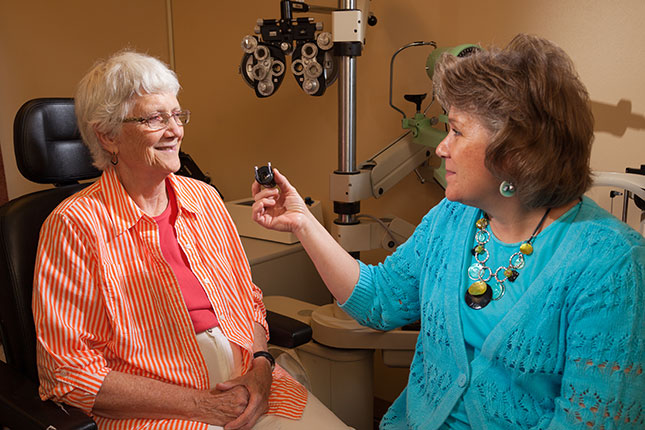What to Expect with Low Vision Services

Posted In Categories: Programs & Services
Q&A with Dr. Heather Hinson
Q: What is the difference between a standard eye exam and a low vision evaluation?
A: A standard eye exam evaluates the eyes to identify conditions that may require the use of glasses or contact lenses for correction and to prevent, diagnose and manage eye health issues. When a visual impairment cannot be corrected with glasses, contact lenses, or medical or surgical treatment, a low vision evaluation is the next step—an extension of the eye exam. Its primary purpose is to help a person see better when regular eye glasses are no longer effective.
Q: What happens at a low vision evaluation?
A: I begin with a review of a person’s medical and eye health history, taking special note of any functional problems a client is experiencing. Problems may include reading, working in the kitchen, driving, maintaining employment, dealing with glare problems, viewing television, using appliances, etc. I help clients understand their eye diseases and then together we develop specific goals for what they want to accomplish.
During the evaluation I complete a magnification assessment to determine the proper amount of magnification a client needs to achieve their goals. I then compare and contrast various tools until we find the ones that are most effective.
I also assess the areas of task lighting, glare and contrast, and introduce clients to non-optical tools and techniques like bold lined paper, check writing guides and large print materials.
Q: What can be learned through a low vision evaluation?
A: Clients learn what they can do right now and the tools that are most effective in helping them on a daily basis. Establishing this information is critical to improving functional abilities and often leads to increased confidence and a more positive outlook on living with vision loss.
Q: What is the best time for a low vision evaluation?
A: The best time for a person to schedule a low vision evaluation is when accomplishing the tasks of everyday life becomes difficult.